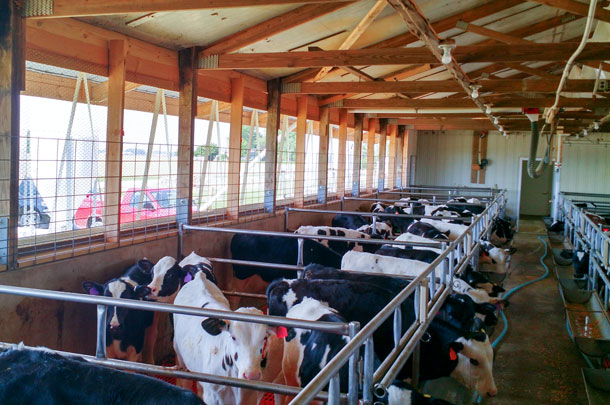I will be honest: I didn't know anything about veal farming until after I started blogging about our family dairy farm a few years ago. As my content began to be shared within activists groups, the accusations that we “murder our baby cows” started to flood in.
I was completely confused. Why in the world would anyone believe that we would kill our calves including our heifer calves? I started to do some digging and quickly found out why. Everything I clicked on when searching “veal farms” was negative. Let me rephrase that: It was horrible.
I decided to start asking my fellow dairy farmers about veal farms and their practices. I truly wanted to give veal farms the benefit of the doubt because I know as a dairy farmer how much negative and false information there is about us. The thing was, my fellow dairy farmers also didn't know anything about veal or had only heard the negative information I had found online.
It took some time, but I was fortunate to meet and become friends with someone who worked for the American Veal Association. After I had all my questions answered and was even able to interview a veal farmer online, I quickly realized what was online was either false information or old industry practices. I wanted to visit a veal farm to see for myself but learned that the majority of licensed veal farms in the U.S. are located in Wisconsin, Indiana, Ohio, Pennsylvania and New York. So I was out of luck with finding a farm in the state of Washington.
So you can imagine my excitement when the American Veal Association decided to put on a mini blogger tour. I traveled to Indiana and Pennsylvania to visit several veal farms as well as a processing plant. I was able to see bull calves from the time they arrive on the farm all the way through the processing. As I shared my experience along the way, I was a little surprised to see farmers and ranchers post negative comments about veal, including a comment, “Do your research.” I was a little taken back. Do my research? I was experiencing it firsthand. Regardless of how you feel about eating veal, there are some things my fellow farmers should know about the current state of the veal industry as to not add to the misinformation and fear that is already out there.

Here are some facts about today’s veal farming:
- 100 percent of U.S. veal farms are family owned.
- The average size of U.S. veal farms is 200 to 225 calves.
- The majority of U.S. veal farms are owned by Amish or Mennonite families. This is the main reason you will not find veal farmers sharing their stories online.
- Most veal farms in the U.S. are contract growers, much like the poultry industry.
- By the end of 2017, all licensed veal farms will raise their calves in group housing. Over 90 percent of the industry has already converted to group housing. This includes building new barns or completely remodeling the inside of the barn to accommodate these changes.
- Veal farms primarily raise Holstein bull calves from surrounding dairy farms. This is why the majority of veal farms are also located in areas with a high dairy concentration.
- Veal calves are fed milk replacer. The veal industry creates its own specialized milk replacer, which uses whey as a primary ingredient. This is another reason why veal operations need to be located in dairy states.
- The majority of U.S. veal calves are raised as “milk-fed” veal, which includes a diet of milk replacer and grain. It's just as important for veal calves to have a balanced diet as it is for dairy heifers that are raised. They focus on high protein and monitor for iron deficiencies.
- On average veal calves are raised to 20 to 22 weeks with some farms raising their calves to 26 weeks.
- The average weight of a veal calf at harvest is 475 to 500 pounds, depending on the farm and the processor.
- “Bob veal” calves are not calves that are raised in a dark box somewhere. They are actually calves that go directly from the dairy farm through the sale barn to processing. They make up less than 10 percent of the veal industry.
- The veal industry also has an amazing animal traceability program. They can track any package of veal from a store or restaurant all the way back to the dairy farm where the calf was born. That to me is incredibly impressive.
I am happy to report from my firsthand experience that these calves were very well cared for. They had a clean environment, high-quality feed and lived in well lit and ventilated barns. I was very impressed with all the changes they have made since the ’70s. ![]()
Krista Stauffer is a dairy producer from Washington. Email Krista Stauffer.
PHOTO 1: Veal farmers rely on heavily concentrated dairy areas to obtain primarily Holstein bull calves. It’s a win-win for both industries.
PHOTO 2: By the end of 2017, all licensed veal farmers will raise their animals in group housing, not individual crates. Many operations have already modified their facilities. Photos provided by Krista Stauffer.




